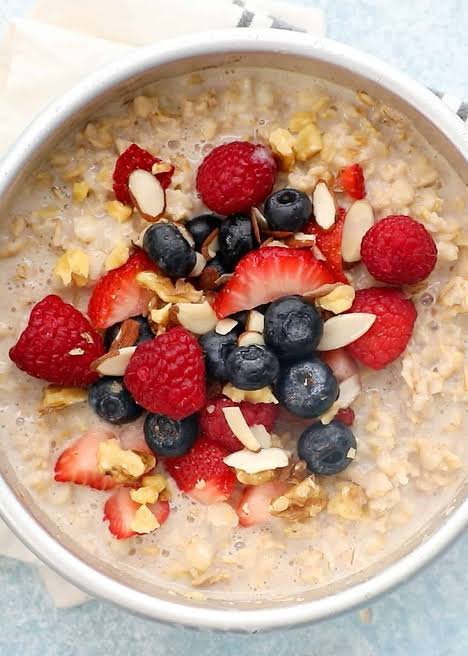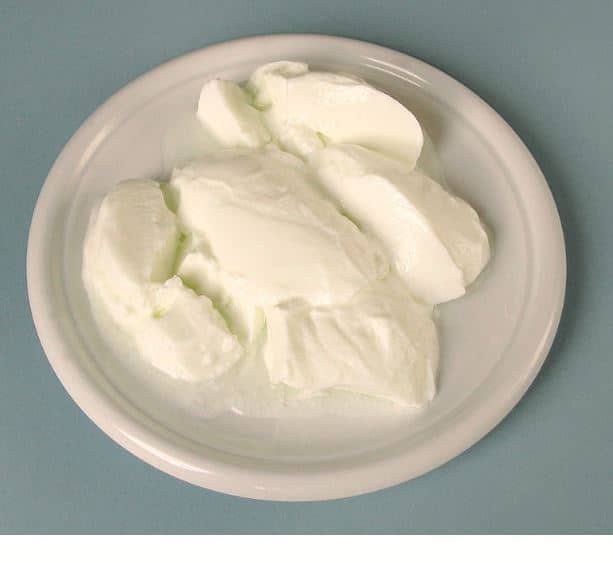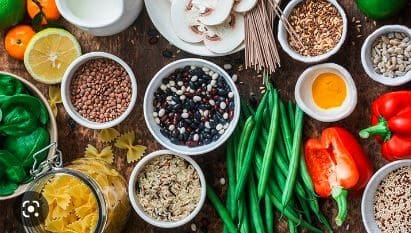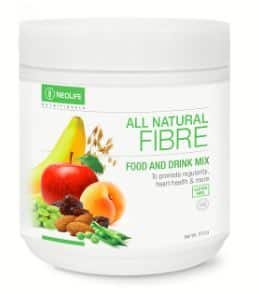Nutritional Advice for Acid Reflux and Heartburn
Nutritional Advice for Acid Reflux, Gastroesophageal Reflux Disease (GERD), foods to eat and foods not to eat.
The meal may be over, but for some, the memory lingers on. And not in a good way. Heartburn, chest pain, belching, coughing, regurgitation here — it’s all part of the picture for those experiencing acid reflux. In fact, 20 percent of adults have chronic acid reflux, known as gastroesophageal reflux disease (or GERD), a condition caused by the flow of contents from the stomach upward into the esophagus.
While antacids and other over-the-counter medication can tame stomach acid, dietary tweaks will help control symptoms and provide sweet relief from that burning sensation. But keep in mind, “every person is different,” says Julie Stefanski, a registered dietitian nutritionist and spokesperson for the Academy of Nutrition & Dietetics. Your doctor or a registered dietitian can help identify what foods and beverages may be personal triggers.
In the meantime, here are five foods that can help you find relief from heartburn or GERD.
1. Oatmeal

Oatmeal
“High-fiber foods make you feel full,” says Neena Mohan, assistant professor of clinical medicine in gastroenterology at the Lewis Katz School of Medicine at Temple University. “That’s a good thing, because you’re less likely to overeat, which can contribute to heartburn.” What’s more, oatmeal in particular absorbs stomach acid. Other high-fiber options: whole-grain bread, brown rice and quinoa; root veggies (carrots, sweet potatoes and beets); and green vegetables (asparagus, broccoli and brussels sprouts). But remember, Stefanski says: “Fiber can’t work unless there is also enough fluid in your diet.”
2. Bananas


MARKO GEBER / GETTY IMAGES
This low-acid fruit can help neutralize stomach acid by coating an irritated esophageal lining. And not only are bananas alkaline, they’re also rich in pectin, a soluble fiber that helps keeps food flowing nicely through the digestive tract. This can help you feel full longer, so you’re less likely to overeat. Other alkaline foods include melons (particularly cantaloupe and honeydew), cauliflower and almonds.
3. Salad greens

YAGI STUDIO / GETTY IMAGES
Eating water-filled foods — celery, cucumber and watermelon are other options — helps dilute stomach acid. In fact, a small 2017 study, published in JAMA Otalaryngology – Head & Neck Surgery, showed that people who followed a plant-based Mediterranean diet heavy in such produce reported less frequent acid reflux symptoms. Just resist the urge to add high-fat dressings, acidic vinaigrettes or toppings such as onions, which can trigger GERD, Stefanaski notes.
4. Yogurt

SEB_RA / GETTY IMAGES
Like milk, yogurt acts as a temporary buffer, soothing heartburn symptoms. “One of the reasons we’re symptomatic with acid reflux is because it causes damage to the lining of the esophagus,” says Nipaporn Pichetshote, M.D., a gastroenterology specialist in Los Angeles affiliated with Cedars-Sinai Medical Center. “Milk and yogurt coat the esophagus so you don’t feel that acid irritating that lining.”
But opt for skim or low-fat varieties, rather than those made from whole milk. “Foods that are higher in fat can cause more reflux,” says Pichetshote, who explains that fatty foods lead to the opening of a muscle separating the esophagus and stomach, allowing acid from the stomach to travel upward. What’s more, milk that’s higher in fat stays in the stomach longer, creating more opportunities for acid reflux to occur.
5. Ginger tea

ALL NEA / 500PX / GETTY IMAGES
A cup or two a day, low-fat yoghurt, may offer a triple whammy of benefits. Not only is this soothing drink alkaline, it’s also anti-inflammatory, which can help relieve gastroesophageal irritation and soothe the stomach. Ginger can also help ease nausea — helpful for those vulnerable to vomiting during acid reflux episodes.
More ways to avoid heartburn
Don’t slouch when eating. It may be tempting to settle into the cushions and watch TV while inhaling that plate of Buffalo wings. But sitting less than straight while you chow down can encourage gastric juices to head in the wrong direction. Doctors say it’s also important stay upright for 45 to 60 minutes after eating. If stomach acid does escape, gravity will send that noxious stuff back to where it belongs: your stomach. “Liquid and gas want to go to the path of least resistance,” Pichetshote says. “If you’re laying down it can easily go up toward your head. If you’re a little more upright, it has to fight gravity to move upward.” The same goes for sleeping: Wait at least two to three hours after eating before hitting the sack.
Find your sweet spot. Overeating is never a good idea. When your stomach is distended and bloated, acid can rise back into the esophagus, triggering symptoms. But an empty stomach can cause problems, too. Go more than three to four hours without a meal or snack, and stomach acid — which would usually be used in the digestive process to break down food — collects. The best approach? Eat smaller meals and eat slowly. And choose water to wash things down.
Loosen the waistband. Clothes that are snug around midsection can constrict the belly area, squeezing your stomach and pushing acid up into the esophagus, says Gulchin Ergun, M.D., a gastroenterology specialist in Houston and professor of medicine and digestive disorders at Houston Methodist Hospital.
Know the 8 worst foods for acid reflux or heartburn
Experts say you can uncover your specific triggers by paying close attention to how your body reacts to what you’re eating. (Keeping a food diary can help.) But you may well find one of the following eight foods pops up as a problem.
1. Fried, fatty foods. Talk about a triple whammy. First, foods that are high in fat and drenched in oil (bacon and sausage, French fries, potato chips and doughnuts, to name a few) cause the lower esophageal sphincter — the ring of muscle connecting the esophagus and stomach — to relax, allowing acid to leak out and up into the esophagus. Also, they are digested slowly and sit in your stomach longer, giving gastric acid more time to work its way up into your esophagus, increasing your risk of heartburn. And high-fat food can cause weight gain. That extra poundage increases pressure on your abdomen, making it easier for fluid to travel upward, into the esophagus. Tip: Opt instead for lean cuts of meat, chicken and fish, cooked on the grill or in the oven.
2. Citrus fruits. Their vitamin C may be the draw, but these fruits’ high acid content makes them risky for reflux. (Our stomachs naturally produce a lot of acid; why make things worse?) Lemons and limes are the biggest culprits, but oranges, grapefruit, grapes and blueberries make the list, too. Tip: Offset their acidity by buffering them with more alkaline (less acidic) foods, such as low-fat yogurt.
3. Tomatoes. Also highly acidic, this common base for many meals is also a culprit in causing gastric acid to back up into the esophagus — and no, cooking tomatoes won’t help. Tip: If you can’t resist the robust flavor of marinara sauce, neutralize the acid by adding one-quarter teaspoon of baking soda to your recipe.
4. Chocolate. Where to begin? Its high fat content, caffeine and theobromine, a compound found in the cacao bean, can all trigger acid reflux. More bad news: Chocolate causes the intestines to release serotonin, which causes the lower esophageal sphincter to relax and open, allowing that unwanted flow back up the esophagus. Tip: Dark chocolate, which contains less fat than milk chocolate, can be less likely to cause acid reflux.
5. Peppermint. A cup of refreshing, mint-infused tea can calm a turbulent tummy. But peppermint, in any form, can also cause gastric reflux and heartburn. Tip: Savor a cup of soothing chamomile tea or suck on licorice-flavored hard candy to soothe your stomach.
6. Carbonated beverages. The bubbles in carbonated beverages are like air pockets, expanding in your belly. This increases pressure on the esophageal sphincter, increasing the risk for acid to reflux into the esophagus. Tip: Try decaf iced tea or dress up tap water with slices of cucumber.
7. Coffee. While studies on the subject are mixed, some have shown that caffeinated beverages may impair the function of the muscles that separate the esophagus and stomach. What’s more, drinking caffeinated coffee may also increase the amount of acid that your stomach produces. Tip: If a decaf brew isn’t for you, try a dark roast coffee (it tends to have less caffeine per bean that lighter roasts). Or cozy up to a cup of herbal tea.
8. Alcohol. More reasons to drink in moderation: Alcohol can irritate the esophagus and make the stomach produce more acid. It also relaxes that gateway of the lower esophageal sphincter muscle. Tip: When it comes to wine, white is more acidic than red and may cause more heartburn. Beer is acidic, and it’s carbonated — both bad news. But it has a lower alcohol content compared to other alcoholic beverages, and may be better for heartburn. Prefer the stronger stuff? Know this: Darker drinks (brandy, whisky and dark rum) contain compounds called congeners, which can increase stomach irritation and heartburn symptoms.
Credit: Barbara Stepko, aarp.org


